In many cultures, ladybugs are a sign of good luck. But when you have a ladybug infestation in your house, you don’t feel lucky. “Why are there so many ladybugs in my house?” you wonder, “How do I get rid of these ladybugs?”
How to get rid of ladybugs? Ladybug control requires sealing your house openings like pipes, chimneys, doors, and windows in the late spring or early summer. You can also get rid of ladybugs with commercial repellent, pesticide, or ladybug sprays. Home-made options include essential oils, LED lights, and a vacuum cleaner.

In this article, you’ll learn how to keep ladybugs out of your house and how to deal with a ladybug infestation. This guide will teach you about a few of the world’s 6,000+ ladybug species. Most importantly, you will know how to get rid of ladybugs and keep them out of your home.
What Is a Ladybug? | Ladybug Identification
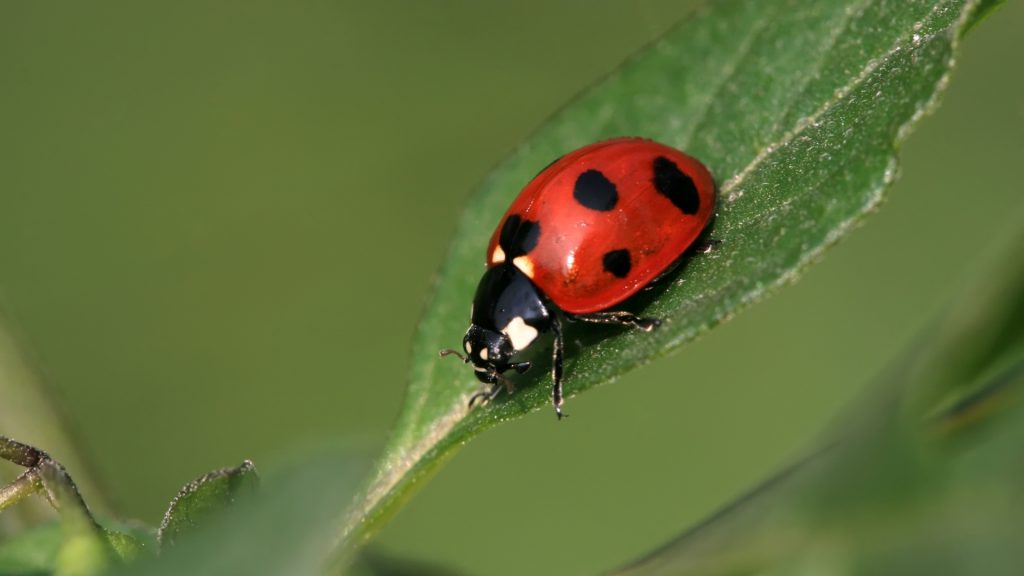
Ladybugs are members of Coccinellidae, a family of small beetles with members located all over the world. Most of the ladybugs found in North America are non-native and were brought in from Europe or Asia for pest control.
What Does a Ladybug Look Like?
Ladybugs range in size from 1 to 10 mm (0.04 to 0.4 in), with females growing slightly larger than males. They have round or oval bodies, with spots against a background color ranging from scarlet red to mustard yellow.
How Many Legs Does a Ladybug Have?
Like all insects, ladybugs have six legs. The ladybug’s feet serve double duty. Not only do they carry the ladybug around, but their scent organs help with finding prey. And if a predator latches onto a ladybug, glands on the beetle’s legs release a bitter and nasty-smelling liquid.
How Long Do Ladybugs Live?
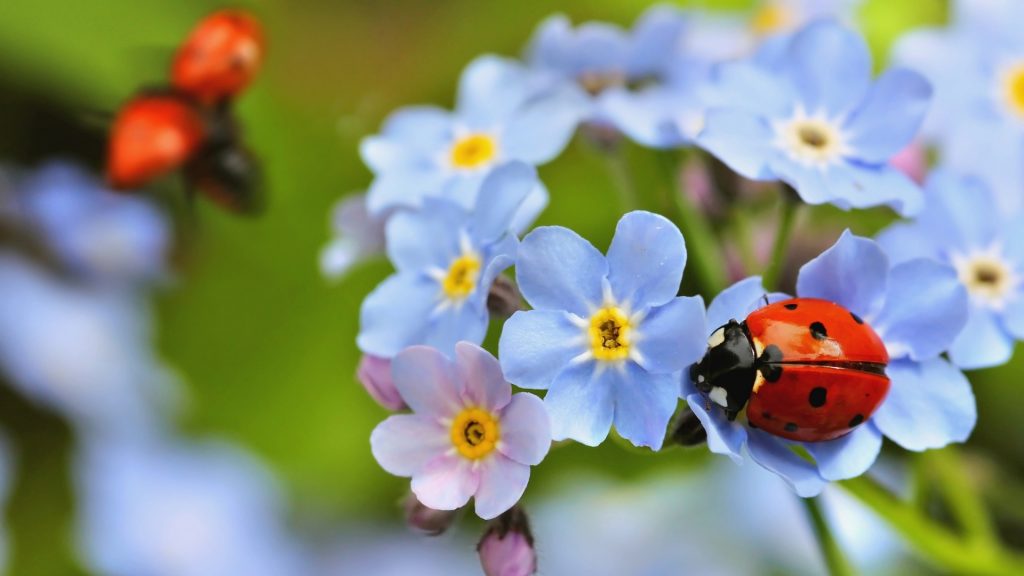
The ladybug life cycle starts with ladybug eggs. A female ladybug can lay up to 300 eggs during her lifetime, which hatch in two to 10 days. These yellow ladybug eggs look like small ovals. The female lays her eggs in clusters near aphid colonies so her baby ladybugs will have a steady supply of food when they hatch.
Through a magnifying glass, baby ladybugs look like tiny blackish alligators with orange stripes. These ladybug larvae will spend the next 21-30 days hunting soft-bellied plant pests before forming a hard pupa. When it breaks free of its pupa 7-15 days later, the ladybug larvae is a fully formed adult insect and will live for approximately one year.
As the cool weather comes, ladybugs seek a warm, sheltered place to rest and wait for spring. During that time, they survive on stored body fats. When spring arrives, ladybugs become more active, and their thoughts turn to ladybug love. The mating season lasts from early spring to mid-summer.
Where Do Ladybugs Live?
Ladybugs are found throughout Asia, Europe, and the Americas. They can be found in shrubs, trees, fields, and gardens. There they serve a valuable purpose by eating aphids and other plant pests. But sometimes, ladybugs overwinter in homes, where they can become a smelly staining nuisance.
What Do Ladybugs Eat?
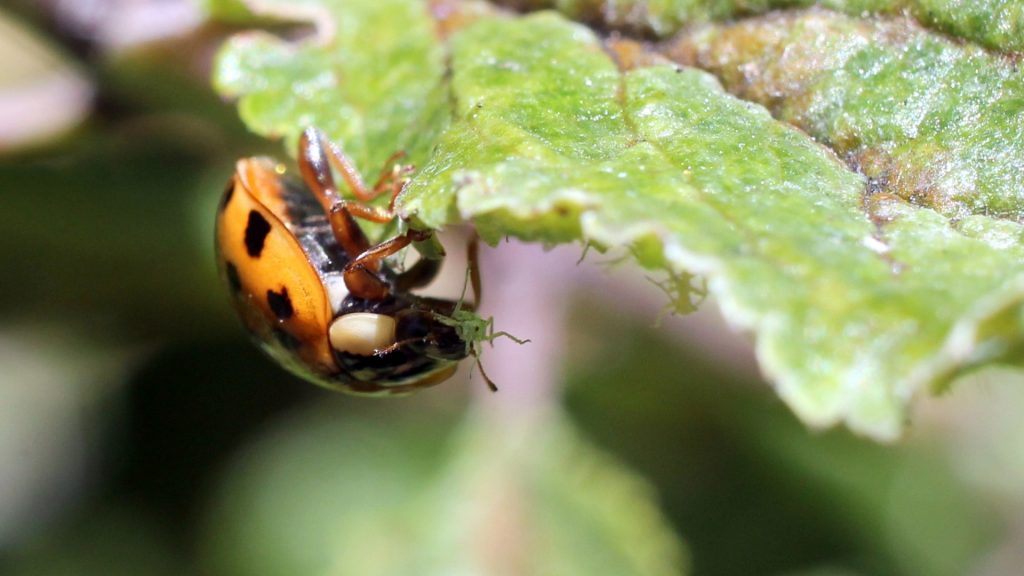
Ladybugs eat aphids and other soft-bodied insects that suck sap and nutrients from garden plants. A ladybug may eat as many as 5,000 aphids, scales, leafhoppers, mealybugs, and other pests in its lifetime.
Types of Ladybugs
The number of spots varies by species and by individual beetles. Among the varieties of ladybug commonly found in North America are:
- Coccinella septempunctata – The seven-spotted lady beetle, has a red body and seven spots. Native to Europe, C. septempunctata was brought to North America for pest-fighting.
- Coleomegilla maculata – The pink-spotted lady beetle, has a pink to red body marked with black spots. C. maculata is a native North American ladybird species.
- Harmonia axyridis – The Asian lady beetle, has become established throughout much of the continental United States.
- Hippodamia convergens – The convergent beetle, is a native North American orange ladybug with black species and between 0 and 13 spots.
There are over 6,000 species within the Coccinellidae family. Most are insectivores like our familiar ladybugs. Some are herbivorous. The Mexican bean beetle (Epilachna varivestis) is closely related to ladybugs and has a similar color and spotted pattern. But instead of eating plant parasites, the Mexican bean beetle is a major agricultural pest.
Imported ladybugs have pushed aside many local ladybug species. If you’re dealing with ladybug swarms in and around your garden, there’s a good chance they are Asian lady beetles. Eliminating them solves your ladybug problem and may help your local ladybugs too!
Do Ladybugs Bite?
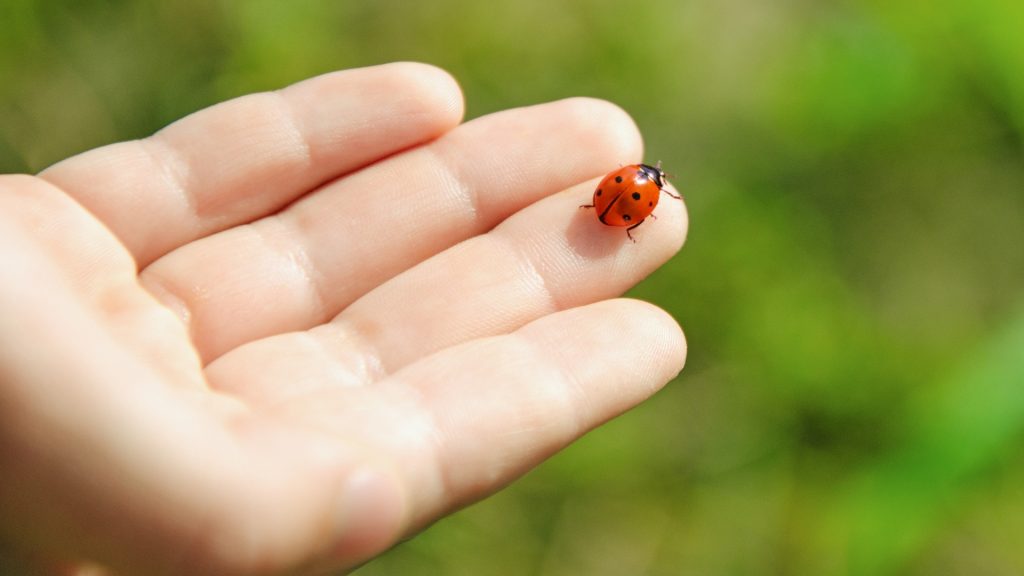
Some ladybugs can bite you. American and European ladybugs don’t have the mandible strength to pierce the skin. When an Asian lady beetle feels threatened by people, it sometimes responds with a pinprick bite which is uncomfortable but harmless. The Asian lady beetle’s bite is not venomous, nor does its saliva contain any allergens.
Are Ladybugs Poisonous?
Ladybugs aren’t poisonous to humans because we don’t eat them. Birds or lizards who eat ladybugs may get sick from toxins in the ladybug’s body. They’ll almost certainly find their ladybug meal foul-tasting. Most predators who eat one ladybug will never eat another.
The ladybug’s bright orange, red or yellow body coloring serves to warn predators, “I taste bad!” This strategy is so effective that the Ladybird Mimic Spider uses ladybug colors to piggyback on the ladybug’s bad reputation.
What Attracts Lady Bugs?
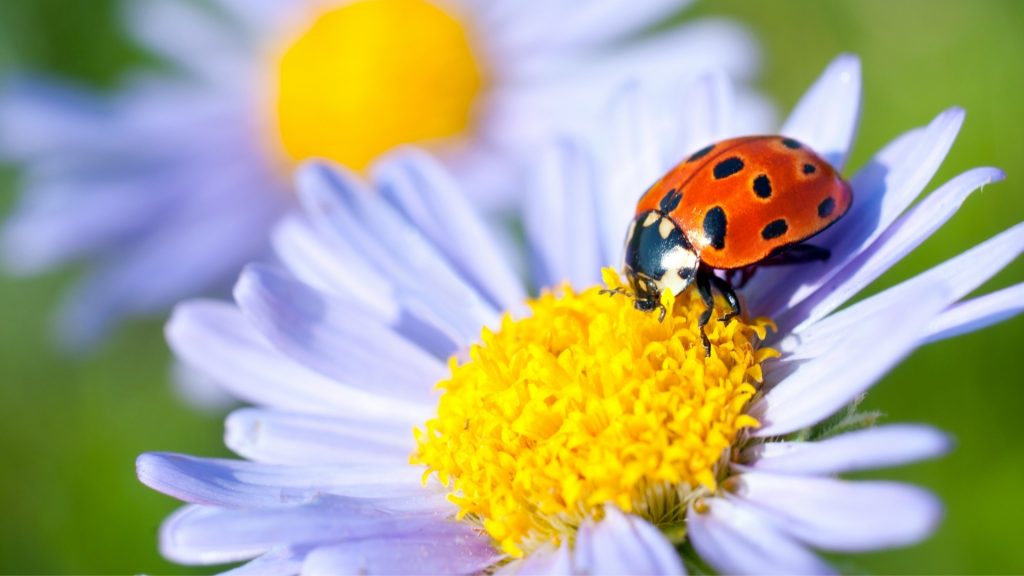
To get rid of ladybugs in your home, you must first figure out what attracts ladybugs in your house. Ladybugs don’t come to your house seeking prey, nor do they mate or lay eggs in your home. What draws ladybugs to your home is warmth and shelter.
In Asia, the Asian lady beetle survives the cool, rainy season by wintering in caves. During that time, they go into a state of semi-hibernation until spring comes. In North America, our houses serve the same purpose for shelter-seeking ladybugs.
Among the plants which attract ladybugs (or, more precisely, the aphids and soft-bellied plant parasites which ladybugs eat) are:
- Yarrow
- White sweet clover
- Tansy
- Sweet fennel
- Spearmint
- Queen Anne’s lace
- Flowering buckwheat
- Crimson clover
- Caraway
- Black locust
How To Get Rid of Ladybugs in House?
If you have ladybugs in your house, you have some openings that allow them entry. Getting rid of ladybugs from your home starts with filling those gaps. Check your house in late spring or early summer before ladybugs begin searching for overwintering sites.
Seal cracks around windows, doors, pipes, or other areas with caulk. Plug larger gaps with cement, urethane foam, or copper mesh. Screen attic vents and repair any damaged window screens. Install door sweeps and foam weather stripping beneath sliding glass doors.
How To Get Rid of Ladybugs Outside House?
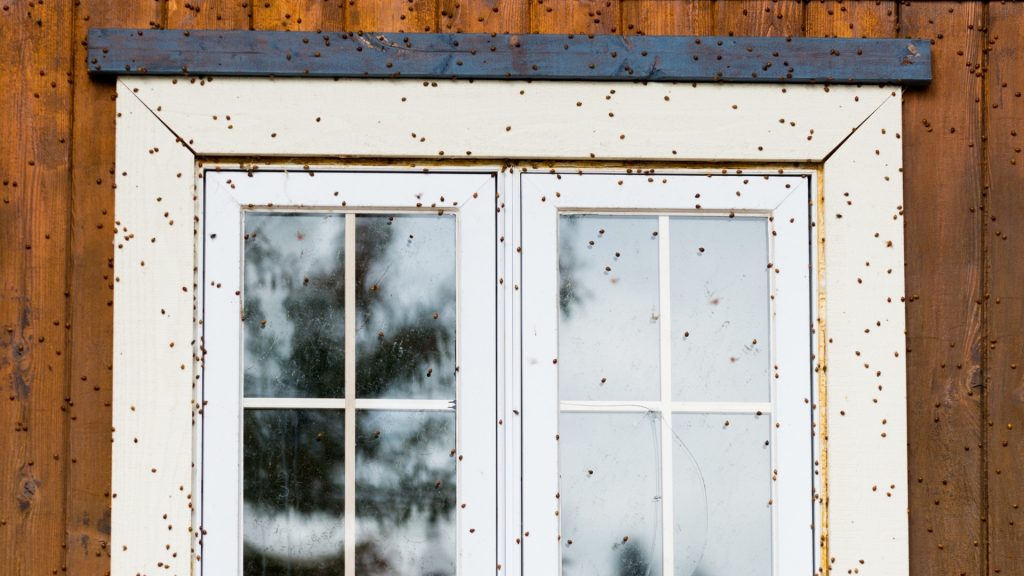
Caulking your home’s windows and getting rid of places where ladybugs can fly in for the winter is one good way to get rid of ladybugs outside your home.
During the summer, those ladybugs lurk outside your window in search of garden pests. But as the nights start getting cooler, ladybugs start searching for a winter crash pad. If a ladybug finds its way into your house, others will soon follow its scent. If there’s no entry to be found, your ladybugs will fly off elsewhere searching for a home.
How To Get Rid of Ladybugs in Car?
Ladybugs can take up residence in your vehicle, especially if you keep it garaged during the winter months. They won’t damage your upholstery or gnaw on electronic circuitry, but you still don’t want a swarm of ladybugs squatting in your car.
The best response against an automobile ladybug infestation is a vacuum cleaner. A hand vacuum or a canister vacuum with a hose will suck up ladybugs as they congregate in your trunk or under your seating.
What Will Repel Ladybugs?
Other than vacuuming and sealing entryways, there are a few different ways of getting rid of your ladybug problem.
Best Ladybug Sprays
- Kills Lady Beetles When Spray Dries - The spray will kill once...
- Odorless Formula - Odorless and non-staining formula will not...
- EPA Registered - Registered with the Environmental Protection...
- Ready to Use - Ready to use formula requires no mixing or shaking
- Water Based - Water based formula leaves behind absolutely no...
Harris Asian Lady Beetle and Boxelder Bug Killer from Amazon contains deltamethrin, a chemical that resembles the natural insecticides produced by chrysanthemums. This spray kills ladybugs fast and is odorless, water-based, and non-staining. As a bonus, sprayed areas remain ladybug-lethal for weeks after application.
Best Ladybug Repellents
- HIGH QUALITY CITRONELLA OIL: 100% pure, gentle, and effective...
- MADE WITH LOVE: UpNature was founded by two brothers with a...
- GREAT FOR AROMATHERAPY: Ideal for use in a diffuser to enhance...
- SAFETY PRECAUTION: For external use only. Recommended Essential...
- Product Ingredients: Citronella oil.
Citronella oil smells unpleasant to ladybugs and many other insects. If you leave some UpNature Premium Quality Citronella Essential Oil from Amazon in spots where you see unwanted ladybugs, they’ll feel encouraged to move on elsewhere.
You can use citronella oil in a spray with water and a few drops of detergent to blend the ingredients. Also, you can use it in a diffuser to deter ladybugs, mosquitos, and other critters.
Best Ladybug Pesticide
- Natural Product - Composed of 10lbs of 100% ground freshwater...
- OMRI Listed - Listed with the Organic Minerals Research...
- Powder Duster Included - Powder duster in the bag for easy and...
- Made in the USA – Mined in Nevada and packaged in Georgia
- Supports a Great Cause - Harris donates a portion of profits to...
If you’re wondering how to kill ladybugs without dangerous chemicals, diatomaceous earth is your answer. Harris 10 lb Food Grade Diatomaceous Earth with Powder Duster will get you through several ladybug seasons safely and organically.
Diatomaceous earth is harmless to humans, but the fine powder has razor-sharp microscopic edges that make it lethal to insects. Spray diatomaceous earth wherever you see ladybugs assembling, and you can solve your ladybug problem without risking your family’s health.
Related: Diatomaceous Earth Uses as a Natural Pesticide
How To Get Rid of Ladybugs With Home Remedy?

You can use citronella or citrus oils to discourage ladybugs or send them packing once they arrive. Spraying essential oils on a spot where ladybugs have congregated helps cover the scent of ladybug secretions. Since ladybugs are drawn to each other’s scent as the nights grow cold, this will help ensure they find different winter lodgings.
How To Make a Homemade Ladybug Trap?
To make a homemade ladybug trap:
Step 1: Cut a plastic soda bottle in half.
Step 2: Flip the top half into the bottom portion to create a funnel.
Step 3: Put a small LED light into the funnel, leaving enough room for the ladybugs to enter the bottle.
When the ladybugs come crawling toward the light, they’ll get trapped in the bottle and can be removed to the outside. This trap will help capture stragglers during the early season and keep a visiting ladybug from inviting family and friends. It won’t be enough on its own to clear out a full-scale infestation after the ladybugs have settled in for the winter.
How To Keep Ladybugs Away?
Chrysanthemums around your house will help keep ladybugs from coming into your home. Chrysanthemums produce pyrethrins, natural insecticides, which are the basis for many insecticides sold on the market today. This plant will also discourage deer, rabbits, and other grazing pests, and they look great too!
Summary
Ladybugs are traditionally good luck, and most of the time, they’re good to have around. But when you have a swarm of ladybugs in your attic or bathroom, you want to get rid of them. With this article, you should be able to solve your ladybug problem and get your ladybugs back in the garden where they belong.
List of Sources
Daw, S. Ladybug. (2020). National Park Service.
Frank, J. H., Mizell, R. F. (2000). Featured Creatures: Lady Beetles. University of Florida Entomology.
Bessin, R. (2019). Ladybugs. University of Kentucky Entomology.
Cranshaw, W. S. (2014). Lady Beetles. Colorado State University Extension.
- How to Get Rid of Copperheads | Practical Guide - August 27, 2023
- How to Get Rid of Corn Snakes | What Makes Them Aggressive? - August 27, 2023
- How to Get Rid of Alligators | Safety Measures and Removal Methods - July 16, 2023



